Sign In
Welcome to AI Checker Sign in to continue your exploration of our platform with all its exciting features.
Forgot Password?
Don’t have an account ? Sign Up
Forgot Password
We'll Send You An Email To Reset Your Password.
Back to Login
Sign Up
Embrace the Future with AI Checker Sign up now and let's rewrite the possibilities together.
Already have an account? Sign In
Enter OTP
We'll send you an email to reset your password.
Back to Login
Enter OTP
We'll send you an OTP on your registered email address.
Back to Login
Confirm Password
Please enter your new password.
4 Ways AI Content Detectors Work To Spot AI
 Megan Haris
Megan Haris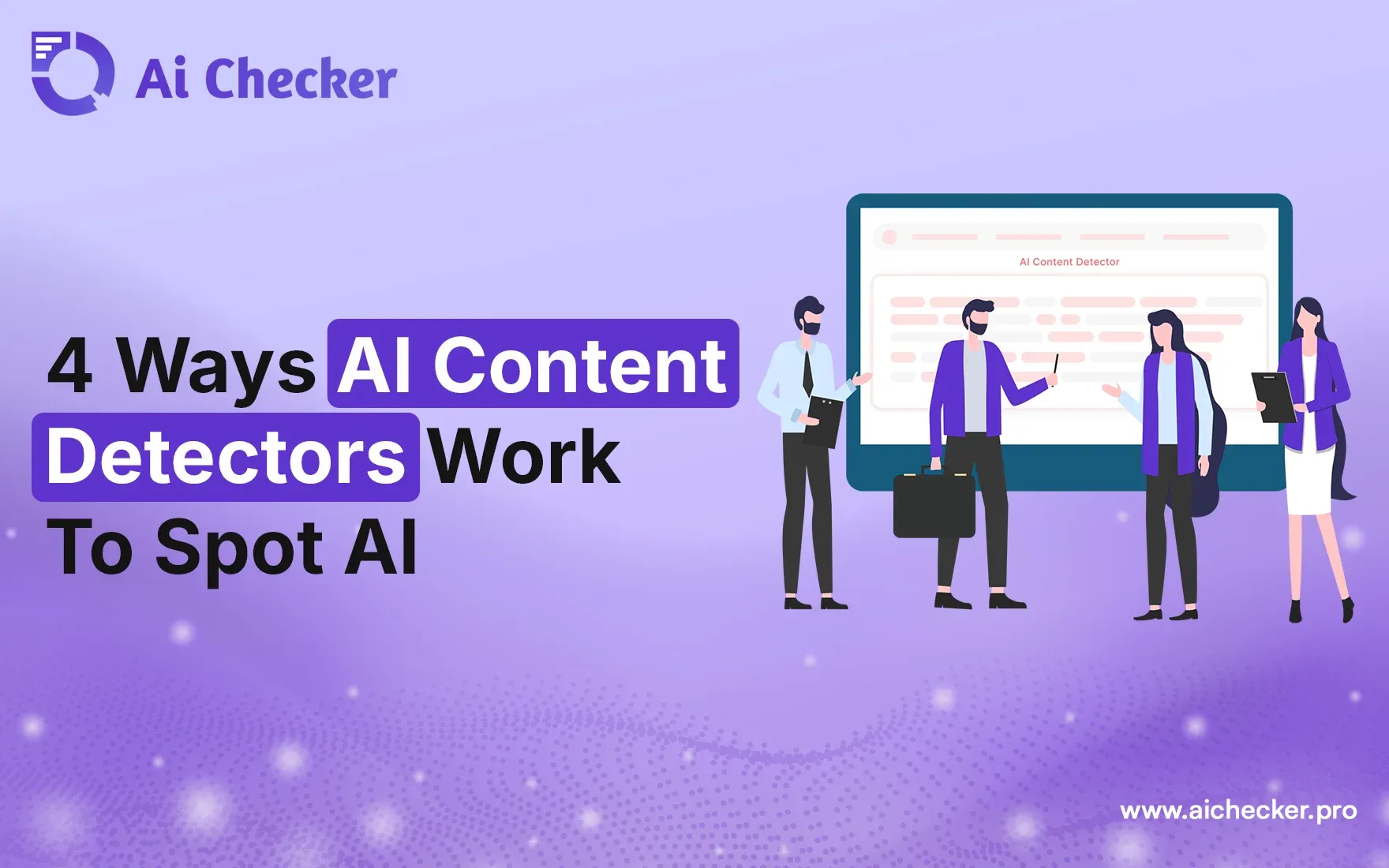
TABLE OF CONTENTS
What Are AI Detectors?
How Do AI Detectors Work?
How Reliable Are AI Detectors?
AI Detectors vs Plagiarism Checkers
How to "Humanize" AI-Detected Text
Tools That Help Make AI Text Sound Human
Key Takeaways
Conclusion
FAQs
As AI writing tools, like ChatGPT, gain popularity, people are asking how do AI detectors work. No matter your role as a student, teacher, or content creator, knowing how ai detection works will help you find your way in the world of AI-generated content.
AI detectors are advanced software tools that can distinguish between text produced by a human and text generated by artificial intelligence. You can think of them as detectives, searching for specific clues in the written material as they work to determine the origin of a piece of written content. Knowing how AI Checkers work is important in today's digital world, where artificial intelligence is being utilized more commonly in content writing.
What Are AI Detectors?
AI detectors are specialized tools designed to determine if writing is human- or AI-generated (like ChatGPT). These tools are being utilized in schools, publishing, and online businesses to prove the content is original and honest. How does an AI detector work? AI detectors review the writing and look for differences indicating whether the writer is an AI or a human. They accomplish this through the use of advanced computer programs known as machine learning (ML) and natural language processing (NLP).
How Do AI Detectors Work?
How do AI detectors work exactly? They read the text you provide and analyze it by comparing patterns, words, and styles; then they look for any indicators that a human wrote the text or the AI wrote the text. AI detectors are trained by many examples, both written by humans and by AI detectors, to learn the difference.
Most AI detectors use the following four main methods:
- Classifiers
- Embeddings
- Perplexity
- Burstiness
Let’s look at each method in simple language.
1. Classifiers
Once a classifier is trained, and you provide it with some new text, it checks for a range of these details and then predicts whether the writing looks more like a human or an AI. How does the AI checker work in this case? It flags writing that appears "too perfect," or suspiciously similar to AI-generated patterns.
Classifiers often classify the content by using techniques such as Decision Trees, Logistic Regression, and Support Vector Machines.
When a classifier checks your text, it will typically return a “confidence score, which indicates how confident it is that the text is AI-generated or human-written.
Example: If a student writes an essay that looks clean and organized and doesn't contain any spelling errors or odd phrases, the classifier might think it looks like AI writing.
2. Embeddings
Embeddings are a means by which computers convert words and sentences into numbers, which can be used to improve the understanding and measurement of language. Every word and entire sentences are converted into a large set of numbers called a 'vector.'
Why? Because computers understand numbers, and use numbers to compare words meaning. In the learned world, "king" and "queen," for example, a good embedding model would produce numbers that are close together.-
Embeddings help AI detectors to understand an author's intent and concept (`sense') behind words used in your text-- like the difference between "bear" (animal) and "bear" (to carry).
With embeddings, model detectors can recognize when text uses word patterns that resemble more artificially-generated it and less human-generated it.
In simpler terms, embeddings provide AI detectors a means to convert your text to "computer language" to help them identify hidden patterns.
3. Perplexity
Perplexity is a metric that reflects how predictable a piece of writing is. If it is very predictable, it is low perplexity, but if it is surprising in its word choice and language, that is high perplexity.
AI writing has low perplexity because it strings together standard and logical language. AI writing also uses words and structures that are simply "safe" and fairly predictable.
Human writing, particularly nonacademic, informal, storytelling, or emotionally driven writing, tends to have a higher perplexity because humans use odd words in more deliberate and undeliberate forms, humans elicit mistakes, and humans are much more prone to using more personal variations of sentence structure.
Some detectors consider perplexity to be a key indicator. If something reads sort of "too perfect", it is flagged as AI-generated despite it not being AI-generated.
For example, the statement "I couldn't get to sleep last night" is predictable and has low perplexity. It would therefore appear AI-generated. The statement "Sleep evaded me as the neighbors' errant saxophone shrilled into dawn" is unpredictable, higher perplexity, and likely human.
4. Burstiness
Burstiness is really about the 'flow' of the writing - variety of sentence lengths and structure. Humans tend to write with more highs and lows: a thought here, then a long sentence, then a complex, short, simple....whatever feelings we are trying to convey.
AI writing will often use the same or similar sentence length or pattern consistently. This feels 'smooth,' but it also feels 'robotic.' This is different than human writing with more burstiness, like a simple thought, followed by a longer explanation.
Detecting AIs look for this characteristic bounce in human writing to determine whether or not they think the writing is human or AI-generated.
Simplified: If your writing sounds a little 'bumpy,' or it has bursts of shorter sentences and longer sentences, it is likely more human. If all sentences are very similar, instead of saying "The cat sits. The cat eats. The cat sleeps," this would be considered low burstiness, and could mean AI.
How Reliable Are AI Detectors?
AI detectors can be useful, but they are not foolproof. They can make mistakes:
False Positives : They incorrectly identify human writing as AI, even if it's your writing.
False Negatives : They incorrectly identify AI-produced writing as human writing.
AI detectors are most reliable with longer pieces of writing (e.g., essays, poems, articles) and less reliable on smaller amounts (i.e., sentences). Individual detectors will also yield different results on the same piece of writing. Plus, adept writers can often "fool" the AI detector by using different ordering of sentences, incorrect spelling, or thinking outside the box when it comes to language.
Consider this: it's always advisable to check context, meaning, and your own knowledge before relying on a Chat GPT detector or any tool to assess whether writing is truly human.
Detecting AI Writing Manually
Besides using tools, you can look for these signs to spot AI-generated text yourself:
The tone is very formal and even robotic.
Sentences and words are repeated.
No typos or writing mistakes (too perfect).
Arguments feel shallow or miss important details.
The text doesn’t have much emotion or personality.
Transitions between sentences feel strange or abrupt.
Sometimes, some facts are wrong or outdated.
If you notice these, the text might be AI-generated. That’s one way how AI writing is detected manually.
AI Detectors vs Plagiarism Checkers
| Feature | AI Detectors | Plagiarism Checkers |
|---|---|---|
| What do they check? | If the text is human-written or AI-generated | If text is copied from somewhere else |
| How do they work? | Analyze writing style and patterns | Compare your text to massive databases |
| Main focus | Detects originality of style | Finds copied (unoriginal) text |
| Can they find both AI and plagiarized content? | No, only AI or human style | No, only if the text matches another source |
Both are useful, but they check for different things. It’s best to use both for truly original, safe writing.
AI Image and Video Detectors
Today’s modern artificial intelligence isn’t only limited to text; it's also being used to create fake images and videos, commonly referred to as “deepfakes”. There are image and video AI detectors as well.
These detectors will try to find discrepancies in things like unusual colors, weird lighting, and glitches in the shapes of people or items.
While images or videos can be perfect and fool individuals, slight errors may reveal AI images/videos.
Some of the well-known AI image and video detectors include"AI or Not", "Huggingface", V7 Deepfake Detector", and "Illuminarty"
How to "Humanize" AI-Detected Text
If your content gets flagged by an AI detector and you want it to look more human-written, you can use some effective methods and specialized tools to help.
What Can You Do to Humanize AI-Detected Writing?
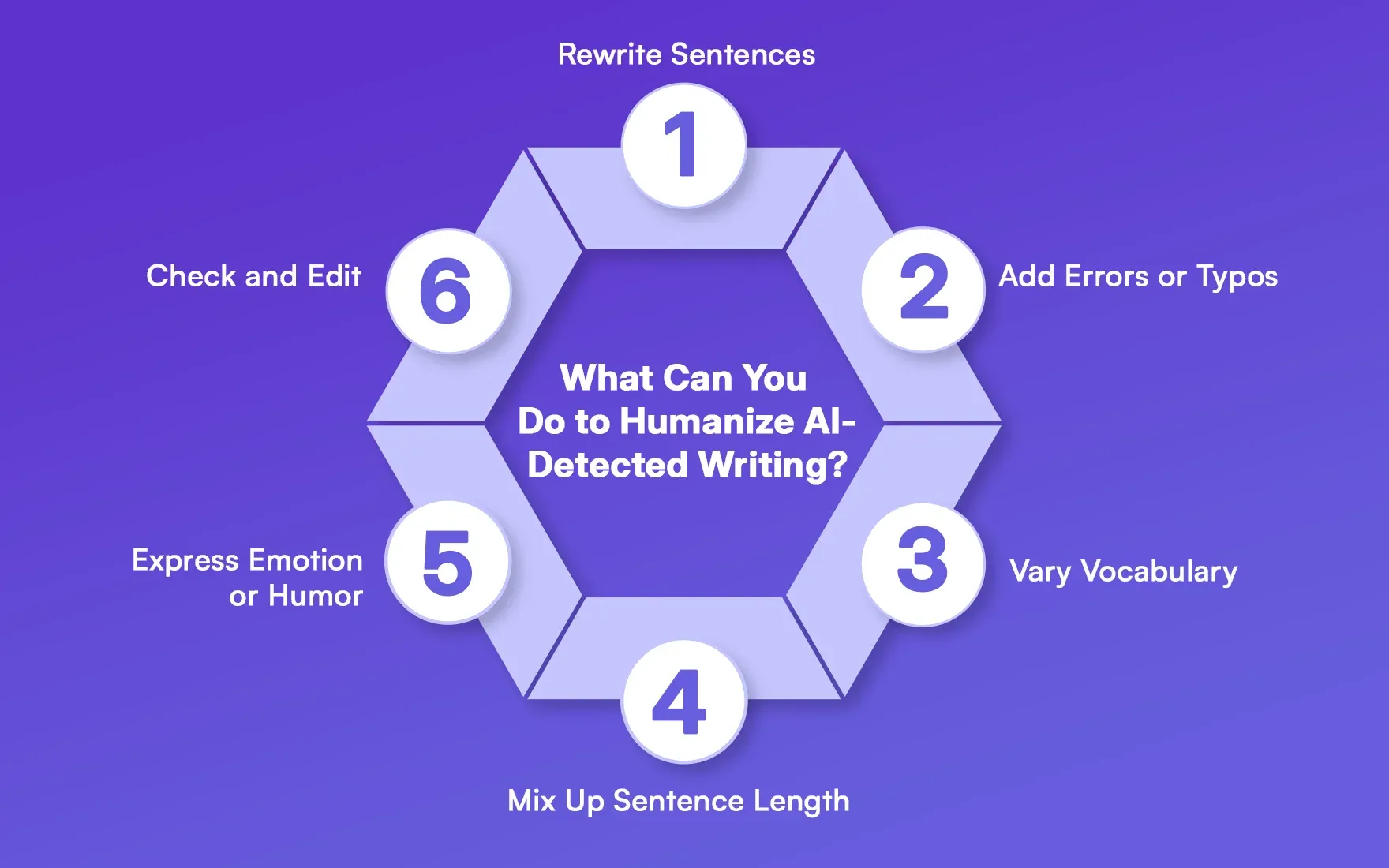
Rewrite Sentences : Change up the structure, have some sentences be shorter or longer, add unique information about your experience, or what you think/feel about certain parts.
Add Errors or Typos : A few errors or informal language will authentically convey that the writing is done by a person. AI writing is usually too polished; avoid perfection.
Vary Vocabulary : Use synonyms for common words, idioms, or regional phrases, etc., that an AI writing program may not use.
Mix Up Sentence Length : Humans usually write with a variety of sentence lengths- mixing short and long sentences conveys a more natural flow.w
Express Emotion or Humor : AI is not usually emotionally based writing. Using your personality or humor will help convey authentic writing.
Check and Edit : Always, always read your writing aloud. If it too flows like robotic writing, then you likely need to rewrite whole sections in your own vocabulary.
Tools That Help Make AI Text Sound Human
There are some tools designed to "humanize" AI text and help it bypass AI detectors:
1. Assignmentgpt.ai
A tool that rewrites AI-generated text to make it sound more natural and human-like.
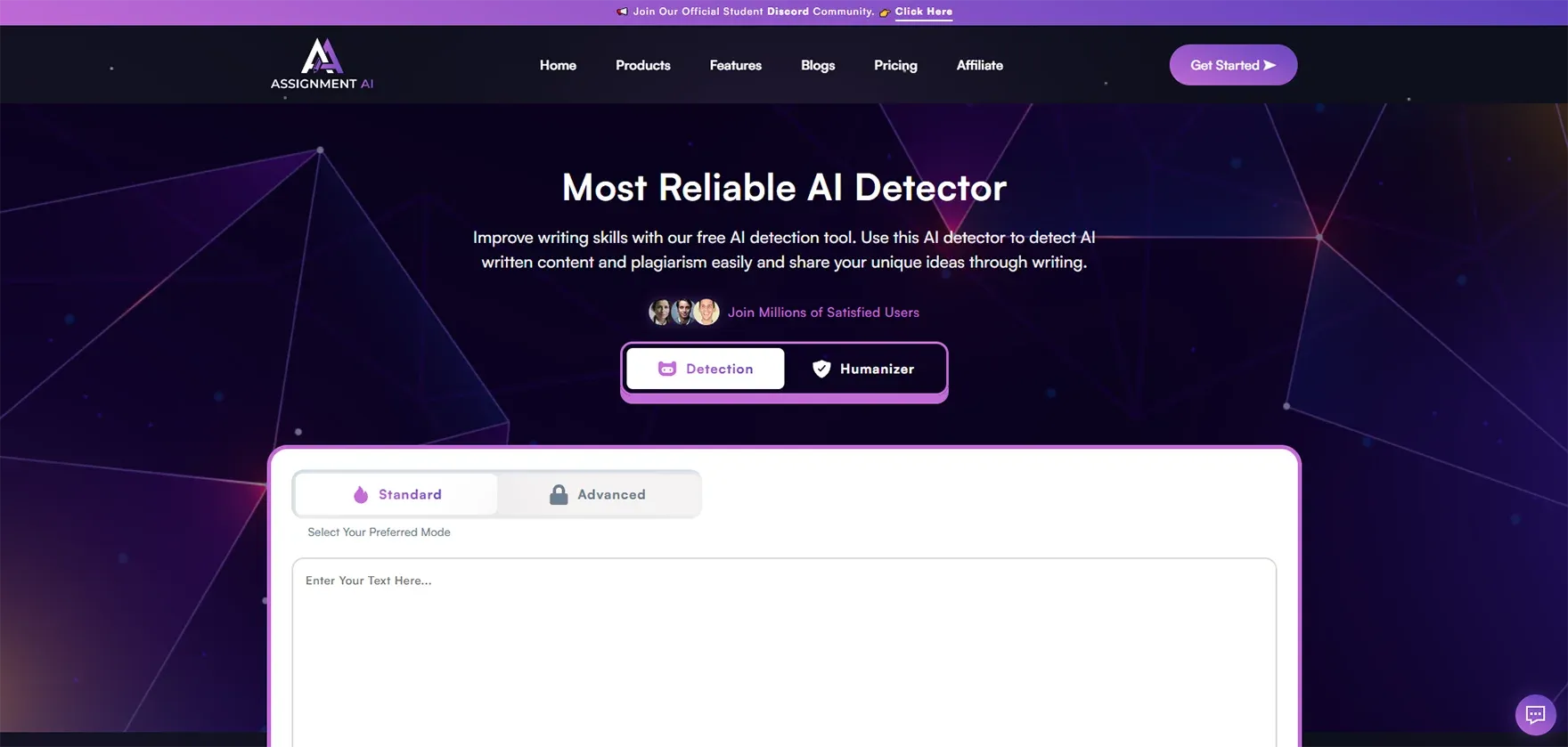
2. AIChecker.Pro
An AI detection tool that evaluates your text and offers suggestions to make it appear more human-written.
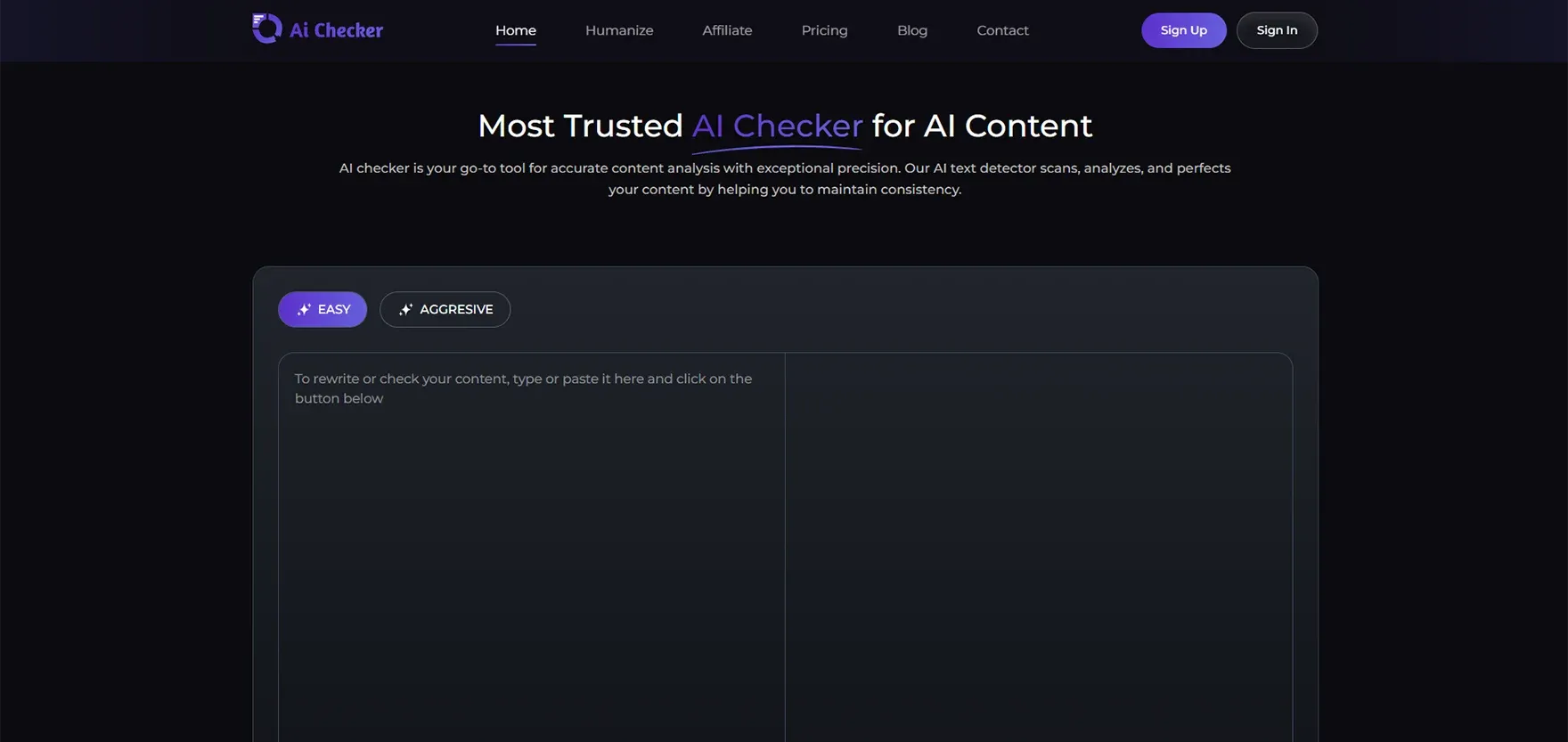
3. Bypassai.io
A service that rephrases AI content to help it pass AI detection by making the text more unique and varied.
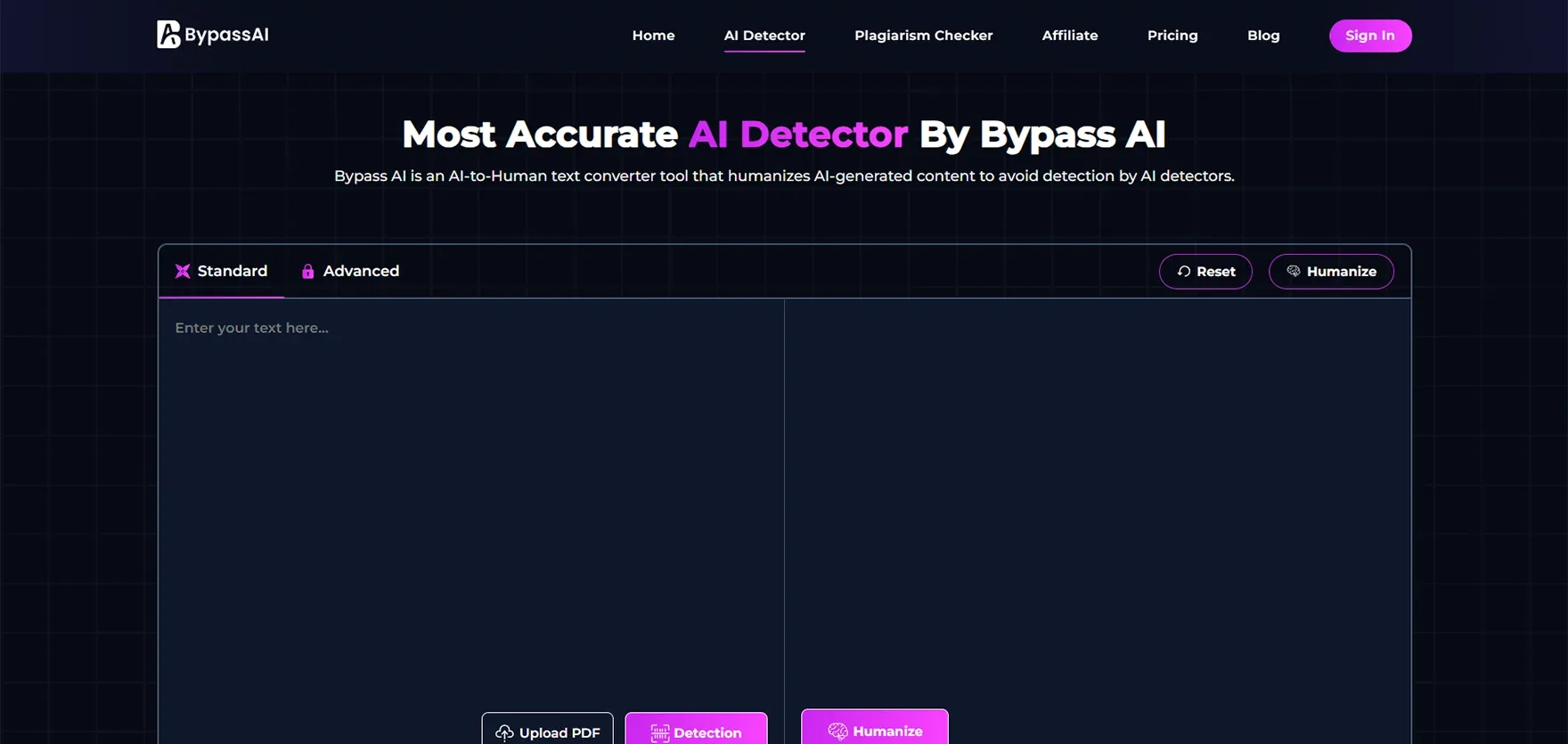
Key Takeaways
AI detectors look for patterns that suggest writing is from an AI or a human.
They use four main methods: classifiers, embeddings, perplexity, and burstiness.
These tools help schools, businesses, and publishers keep writing honest and original, but they’re not always perfect.
Human review and common sense are still important. If you write in your style, in your style, and check your facts, your writing will stand out even from the smartest AI.
By understanding these points, even a beginner can understand how AI detectors work and why they’re important today.
Conclusion
This article explored the inner workings of AI detectors how they identify AI-generated writing using techniques like classifiers, embeddings, perplexity, and burstiness. It also compared AI detectors with plagiarism checkers, discussed the reliability of detection tools, and offered practical guidance on how to humanize flagged AI content. Whether you're a student, teacher, or content creator, understanding these systems helps you stay ahead in today's digital-first world.
If you're looking for a simple, fast, and accurate AI checker, AIChecker.Pro is a user-friendly tool trusted by professionals and educators alike. It not only detects AI-generated content with high precision but also provides easy-to-understand suggestions to make your content sound more human. Whether you're a blogger, freelancer, or academic writer, AIChecker.Pro can help ensure your writing stays authentic, natural, and detection-proof.
FAQs
1. What are AI detectors, and how do they work?
AI detectors are tools designed to determine whether content is written by a human or generated by AI. They analyze text using machine learning techniques like classifiers, embeddings, perplexity, and burstiness to detect patterns commonly found in AI-generated writing.
2. How do AI checkers detect if content is written by ChatGPT?
AI checkers detect ChatGPT-generated content by analyzing sentence structure, repetition, predictability (perplexity), and writing rhythm (burstiness). If the content shows low variability and high predictability, it might be flagged as AI-written.
3. How accurate are AI detection tools?
AI detectors can be helpful, but are not 100% accurate. They can produce false positives (flagging human writing as AI) and false negatives (missing AI content). Their reliability improves with longer text and varies by the tool used.
4. What is the difference between AI detectors and plagiarism checkers?
AI detectors analyze writing style and patterns to see if the content was written by a human or AI. Plagiarism checkers compare content against online databases to detect copied material. Both tools serve different purposes and are best used together.
5. Can AI content bypass detection tools?
Yes, with editing and techniques like adding personal experiences, using varied sentence structures, and introducing errors or creativity, AI-generated content can sometimes bypass detection tools. However, ethical usage and transparency are always recommended.
6. What are perplexity and burstiness in AI detection?
Perplexity measures how predictable the text is—AI text tends to be more predictable. Burstiness refers to sentence length variation—humans write with more rhythm and variety, while AI often creates uniform sentence structures.
7. Why is it important to understand how AI detection works?
Understanding how AI detection works helps students, teachers, and content creators produce more authentic writing, avoid false accusations, and use AI tools responsibly while maintaining originality and trust.

Megan Haris
Content writer at @Aichecker
I am a content writer at AI Checker Pro, where I craft engaging, SEO-optimized content to enhance brand visibility and educate users about our AI-driven solutions. My role involves creating clear, impactful messaging across digital platforms to drive engagement and support company growth.


